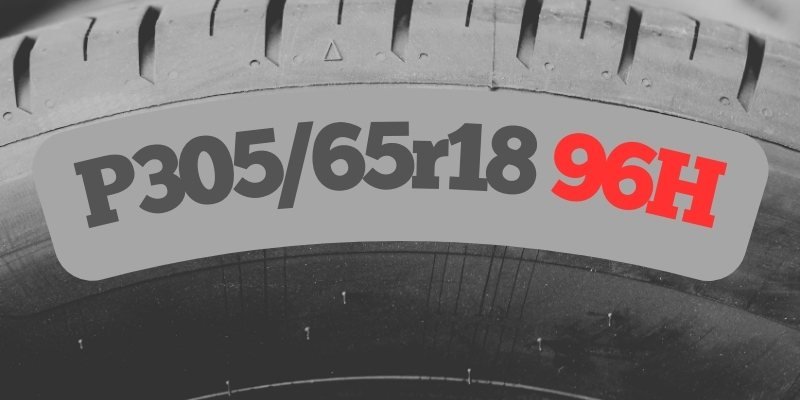What Does 96h Mean on a Tire?

Have you ever looked closely at the side of your car’s tire and noticed a series of numbers and letters? One of those markings might be 96h. But what does this strange code actually mean? It’s simpler than you might think.
The Meaning of 96h
The 96h marking on a tire indicates the tire’s maximum load rating. In other words, it tells you the heaviest weight that the tire can safely support when properly inflated.
The “96” is a standardized code that corresponds to 1,565 pounds (710 kilograms) per tire. The “h” stands for the maximum speed capability of the tire, which in this case is 130 mph (210 km/h).
So if you see 96h on your tire, that means each tire can carry up to 1,565 pounds at speeds up to 130 mph, as long as the tires are in good condition and filled to the recommended air pressure.
For a typical passenger car with four tires, that translates to a maximum vehicle weight of 6,260 pounds (1,565 lbs x 4 tires) that can be safely transported on a set of 96h rated tires.
Why Load Ratings Matter
A tire’s load rating is a critical safety factor. Overloading your vehicle’s tires by exceeding their weight capacity can cause them to wear out prematurely, generate excess heat, and even suffer a catastrophic failure like a blowout.
This is especially dangerous if it happens at high speeds. Automakers specify tire load ratings that match the maximum loaded weight of each vehicle model, including passengers and cargo.
When replacing tires, it’s essential to choose ones with load ratings that are equal to or greater than what the vehicle manufacturer recommends. You can find this information in your owner’s manual or on a placard usually located inside the driver’s side door jamb.
Understanding Tire Codes
The 96h code follows a standardized format that is used across the tire industry worldwide. The number portion can range from 70 to 126 for passenger vehicles.
Each number corresponds to a specific weight capacity in pounds, increasing in increments of about 100-200 pounds for passenger tires.
The letter part can be one of several codes like h, v, w, y, etc. Each represents a certain maximum speed capability for the tire. An “h” rating means the tire is approved for speeds up to 130 mph under optimal conditions. Other common ratings include:
- v: Up to 149 mph
- w: Up to 168 mph
- y: Up to 186 mph
It’s important to note that these speed ratings are determined under controlled test conditions, not real-world driving situations. Factors like road conditions, vehicle loading, weather, and the tire’s state of wear also affect its performance capabilities.
Checking Your Tire Ratings
In addition to the 96h type code, you should also find your tire’s recommended inflation pressure on its sidewall, usually expressed in PSI (pounds per square inch).
Be sure to check your tire pressure regularly and keep them properly inflated, as both over inflation and underinflation can negatively impact a tire’s load carrying capacity and wear characteristics.
If you’re ever unsure about what tire ratings mean for your vehicle, consult a knowledgeable tire professional. They can help you select tires with the appropriate load and speed ratings for your specific year, make, and model and ensure they are installed and inflated correctly.
In Conclusion
So the next time you see a marking like 96h on the side of a tire, you’ll know it’s communicating vital information about that tire’s capabilities – specifically its maximum load rating of 1,565 pounds per tire at a maximum speed of 130 mph.
By understanding and respecting these ratings, you can help optimize your vehicle’s performance and safety.

Meet Caitlin McCormack, a Tire Size Expert and Blogger Passionate About Everything Related to Tires. With Years of Experience in the Tire Industry, Caitlin Has Become an Expert in Tire Sizes and Their Impact on Vehicle Performance.
